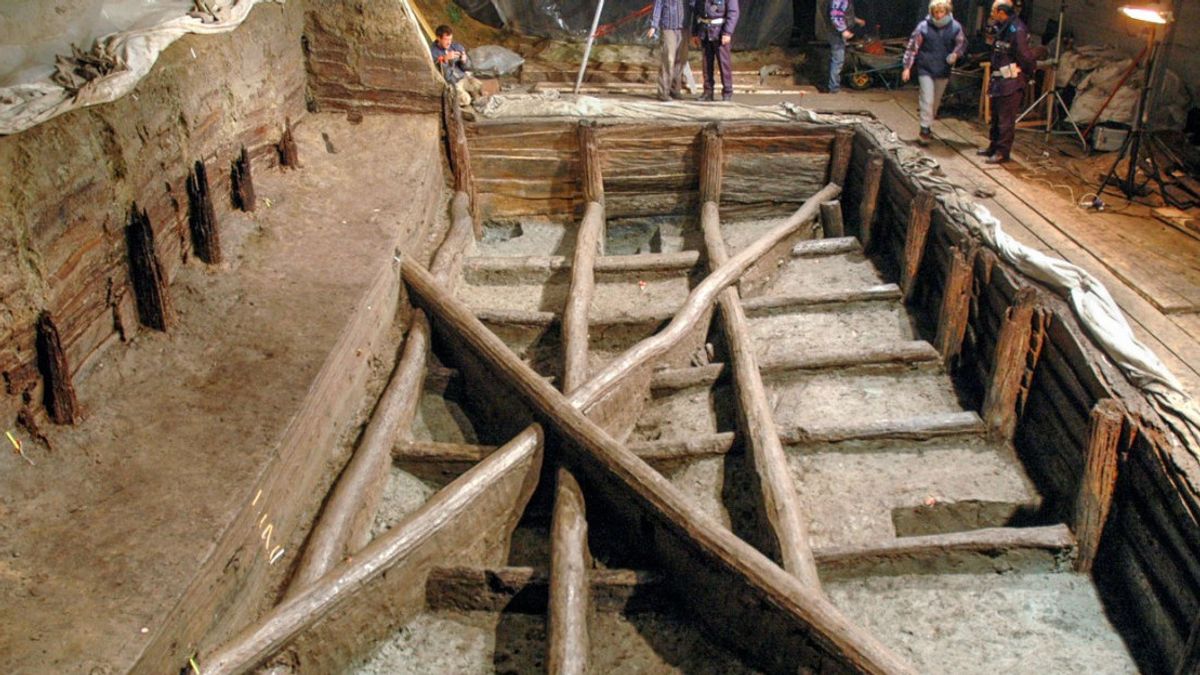JAKARTA - Archaeologists from the United States believe the 3,000-year-old infinity pool structure found in the Municipality of Noceto, Italy, was used to perform religious rituals.
Citing The Jerusalem Post of Livescience July 4, the structure known as 'Vasca Votiva' was discovered in 2004 ago. Vasca Votiva itself is Italian which means 'sacred tank'.
Researchers say, this pool seems to reflect the sky, so that people who see it will feel like they are looking into another world.
"As you think about it, as soon as you can start looking at the surface, you will effectively see the edge of the ground around the sky," said Cornell University archaeologist Sturt Manning.
"And when you approach it, you only see the reflection of the sky, so you will, in a sense, enter another world. Infinite swimming pools today are similar in their reflective beauty," he explained.
The researchers were able to use carbon dating from the wooden planks to determine the age of the pond. They determined that it was built between 1436 BC and 1428 BC, during the Bronze Age.
This was a period of cultural change in the region. Communities are transitioning from small farming communities to larger settlements, according to the researchers.
Therefore, they decided that it could not be used for irrigation or agriculture because the structure was too complex.

"If it's just for irrigation or something, that's fine, but it doesn't seem to work for that. It's more about some group activity they thought would be beneficial, or the gods would be glad that they had done this," Manning said.
Manning, who worked on the research with his Cornell team, compared it to Neolithic Stonehenge in England, because both were designed to take people to another world.
Citing archaeology.wiki, this finding confirms the Noceto Vasca Votiva was built at a crucial moment of societal change, reinforcing the theory of Italian researchers that the structure was used for supernatural water rituals.
The Manning team's paper is entitled 'Dating the Noceto Vasca Votiva, a Unique Wooden Structure of the 15th Century BCE, and the Timing of a Major Societal Change in the Bronze Age of Northern Italy,' and was published in the scientific journal 'PLos ONE' on 9 last June.
The Noceto Vasca Votiva is said to be about 12 meters long, 7 meters wide and about four meters deep, although the depth was a bit ambiguous at first. When the site was fully excavated, the researchers discovered the structure had a second tank underneath, which had been built first but collapsed before being completed. It was initially unclear how much time passed between the manufacture of the two tanks, which share some of the same materials.
Judging by the size of the structure and the extensive labor required to dig soil and drag logs up an uphill location, Italian researchers recognized the Noceto Vasca Votiva was a major undertaking in its day and theorized about its purpose.
Since the building is located on a hill and not in the middle of the village, it is not used as a reservoir or well. The fine layer of sediment that fills the structure, and the absence of channels, implies that it was not used for irrigation.
In addition, the researchers found a large set of objects deliberately kept in the tank, including many ceramic vessels, figurines and various stone, wood, and organic items. All the evidence suggests the structure was used in some kind of supernatural water ritual.
"It's tempting to think it's about creating a reflective surface that you can see, and where you put some offerings, but you're also looking at the sky above and connecting the ground, sky and water (rain)," explains Manning.
Given the fact that this nearby settlement on the southern edge of the Po Plain was built with dikes and terraces, and the area is agriculturally productive with a lot of water management, water was clearly essential to all aspects of the builders' lives. At least for the time being.
"The collapse of the entire social and economic system in the area around 1200 BC seems to have happened because it became much drier," Manning said.
The English, Chinese, Japanese, Arabic, and French versions are automatically generated by the AI. So there may still be inaccuracies in translating, please always see Indonesian as our main language. (system supported by DigitalSiber.id)













